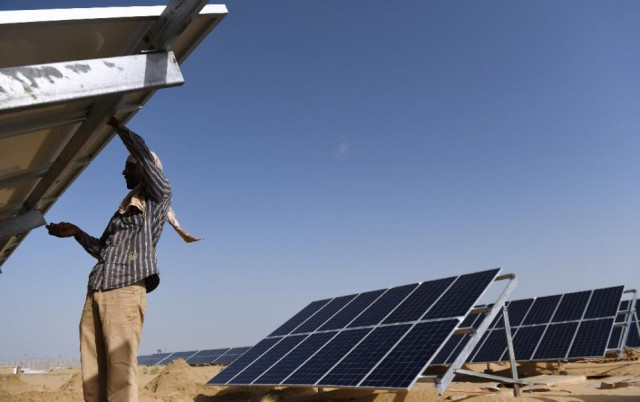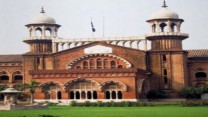Punjab govt green-lights Rs10b solar project
CM Usman Buzdar says Punjab’s energy needs more than others

In its quest to convert hundreds of public hospitals, schools and offices on solar energy, the Punjab government has decided to set up a 100-megawatt (MW) solar power plant in district Layyah.
The Punjab Power Development Board (PPDB) of Energy Department, Alternative Energy Development Board and Zhenfa Pakistan New Energy Company, on Thursday, signed an agreement for setting up a 100-MW solar project with an investment of Rs10 billion in Chaubara, Layyah. The project will generate electricity at 3.7 cents a unit.
The agreement signing ceremony was jointly chaired by Punjab Chief Minister Sardar Usman Buzdar and Federal Minister for Energy Umer Ayub Khan.
The PPDB managing director, Alternate Energy Development Board (AEDB) CEO and Zhenfa Pakistan New Energy Company CEO signed the agreement on behalf of their respective companies.
Speaking on the occasion, Buzdar highlighted that energy needs of Punjab are greater than other provinces due to the size of its population and developing economy.
The province consumes around 70% of the total electricity produced in the country and pays 82% revenue of the national income generated from the electricity sector.
“Pakistan Tehreek-e-Insaf’s (PTI) government is working to generate cheap electricity as the past government set up expensive energy projects which burdened the masses,” he said, adding that the provincial government was committed to fulfilling energy needs from its own resources.
He announced that the government has planned to convert 210 public hospitals, 210 basic health units and hundreds of government offices on solar energy in phased manner.
Estimates suggest these projects would help the province to save Rs3 billion per annum on energy expenditure. He indicated that Punjab Energy Efficiency and Conservation Agency was providing technical advice to government institutions and energy conservation building codes have also been compiled which will help in saving money.
He disclosed that proposal was being reviewed to transfer industrial estates, WASA and Orange Line Metro Train like projects on alternate energy. Government is facilitating the investors as ample investment opportunities are available in the energy sector, he added.
A mechanism has been devised to ensure implementation of energy projects in the minimum time. The chief minister stated that over 170 million units of electricity will be provided to the national grid through this project to fulfil the needs of around 17,000 families. Meanwhile, the waste-to-energy project is also being studied by the Punjab government, the chief minister said.
Federal Minister Umer Ayub Khan said solar project agreement was signed with minimum tariff for which Buzdar and his team deserve accolades.
Past governments set up expensive energy projects and poor planning was done in the past but the incumbent government is generating electricity through cheap resources.
He highlighted that the net metering would be brought to single-phase as transmission lines have been improved which have the capability to supply 24,000MW electricity. Separate tariff for WASA is also being reviewed, he added.
Provincial Energy Minister Akhtar Malik said that most expensive solar projects were set up in the past tenure and public money was mercilessly wasted. Eight thousand schools have already been converted to solar energy and the target of converting 15,000 schools to solar energy will be achieved.
ACS (Energy) Irum Bukhari said tariff of the 100MW project is 3.7 cent per unit. Information Minister Fayyazul Hassan Chohan, assembly members Ghazeen Abbasi, Sadia Sohail, advisor Dr Salman Shah and energy experts were also present on the occasion.
Published in The Express Tribune, September 4th, 2020.



















COMMENTS
Comments are moderated and generally will be posted if they are on-topic and not abusive.
For more information, please see our Comments FAQ